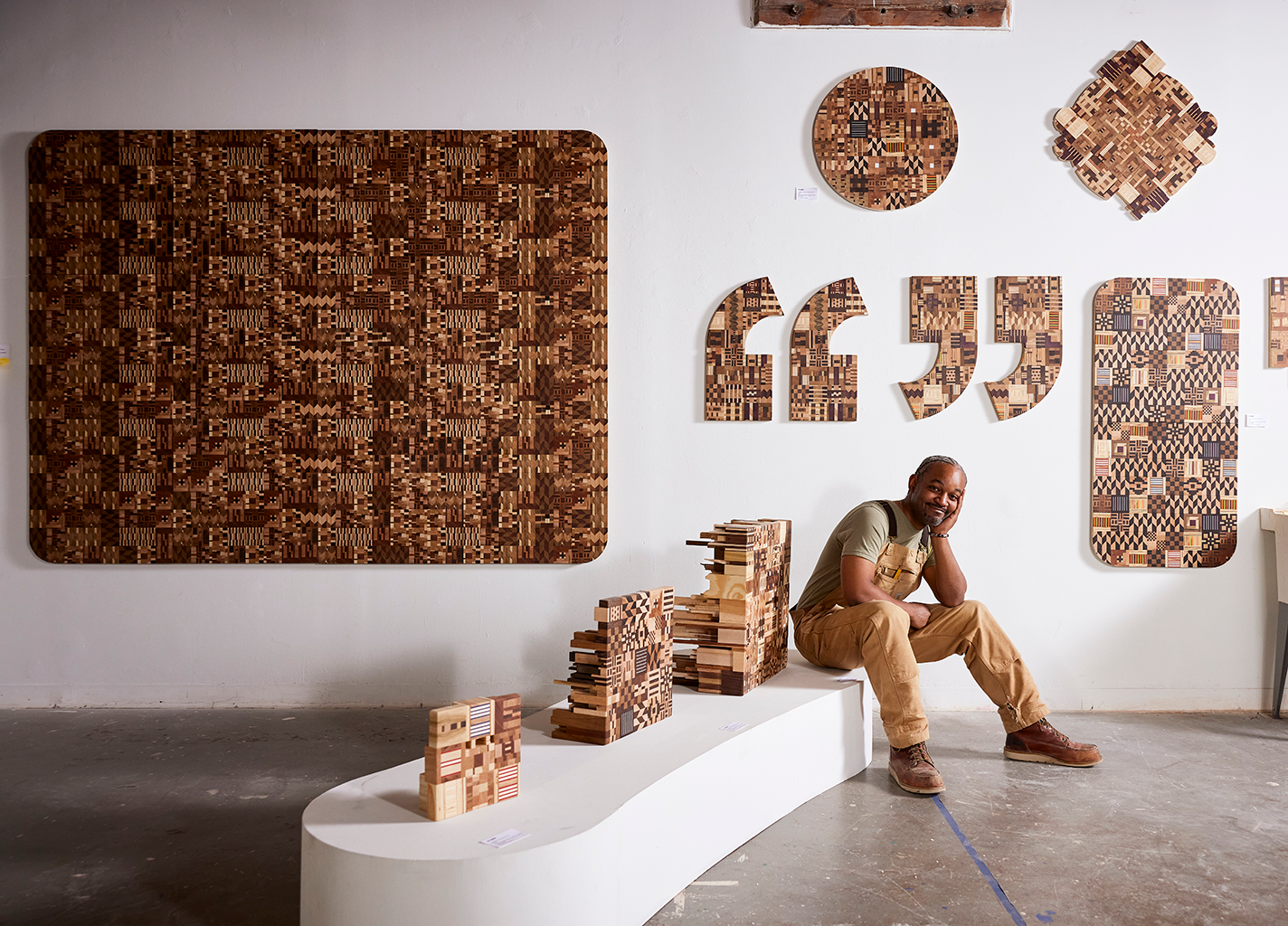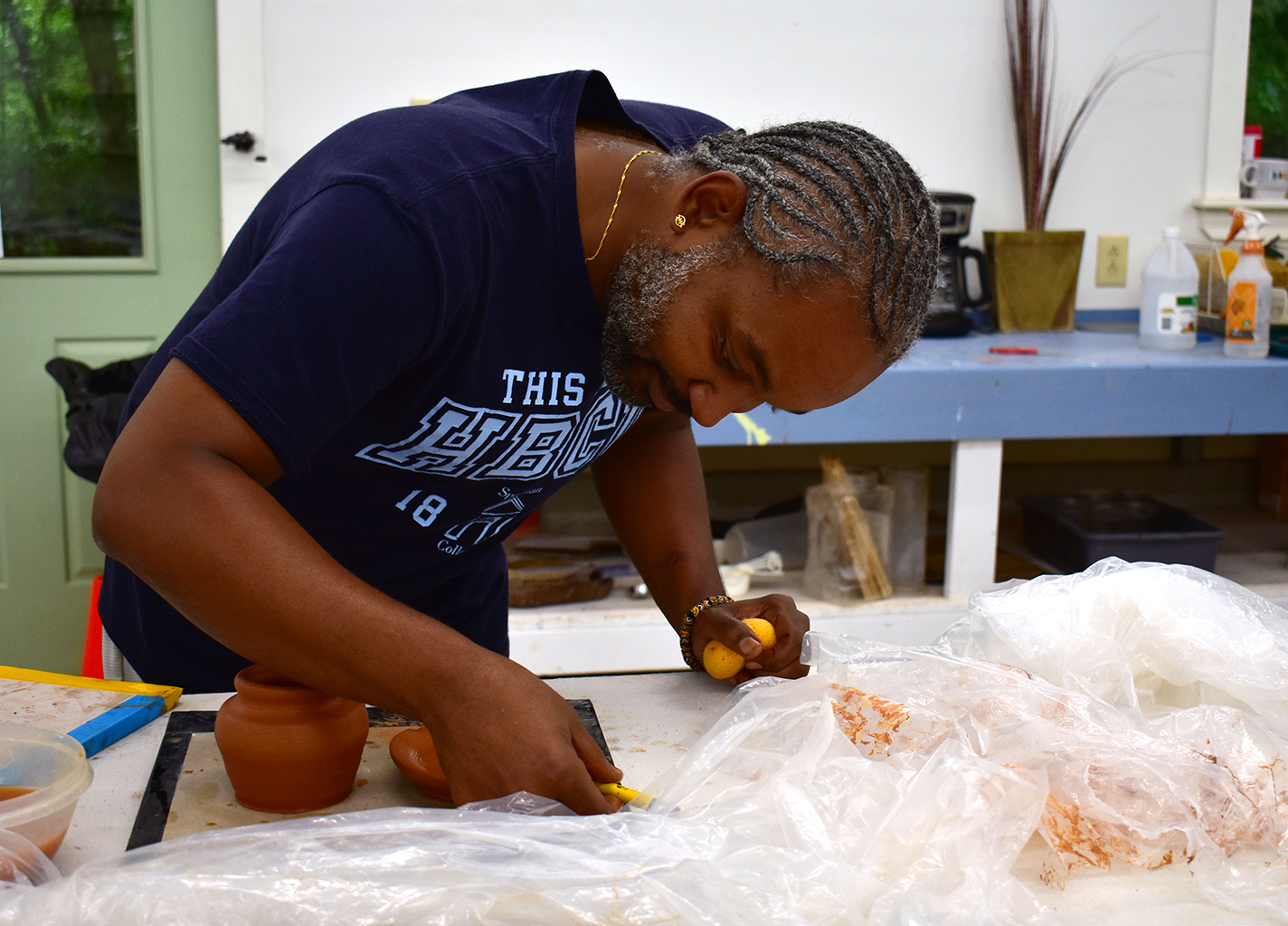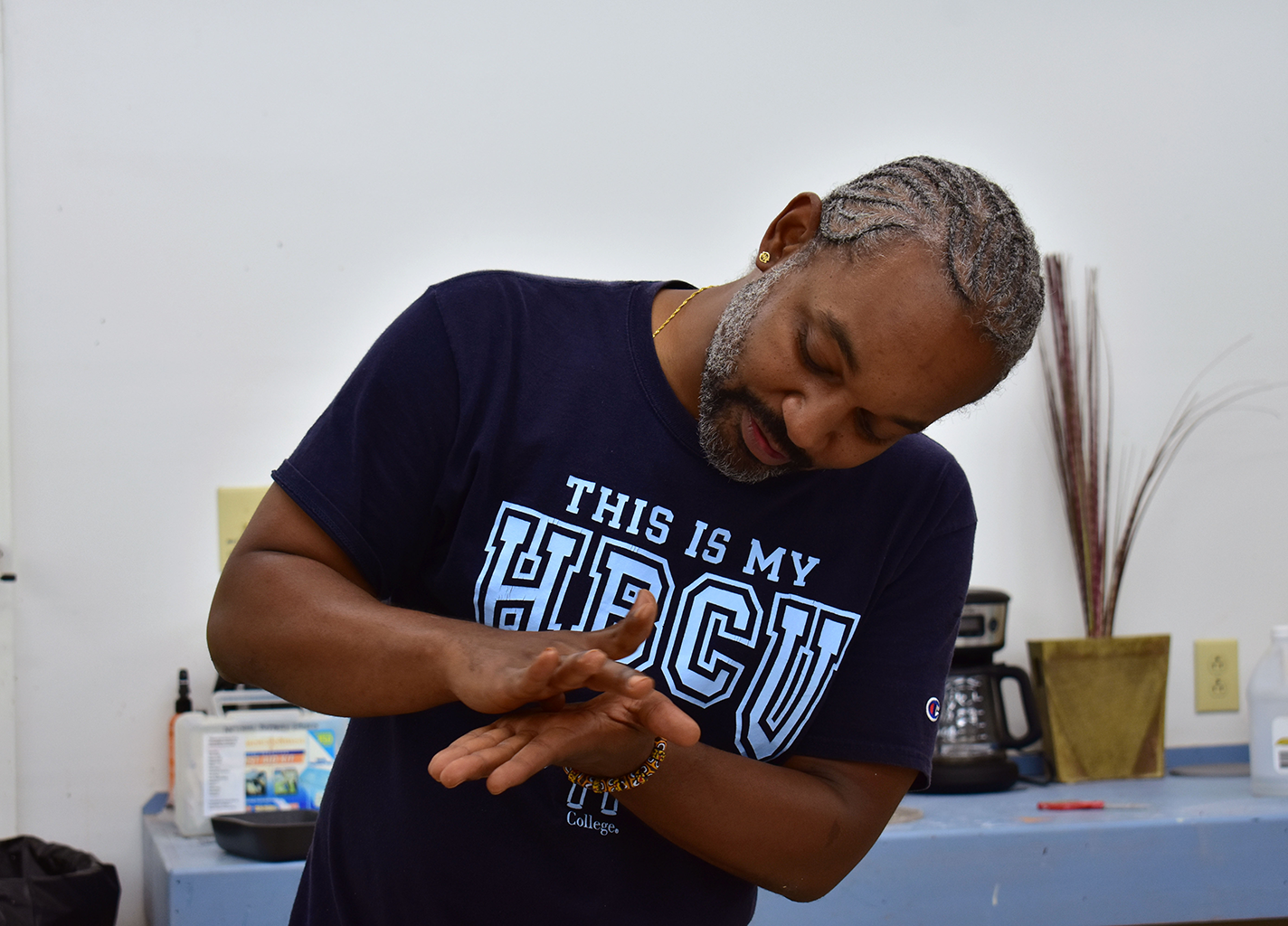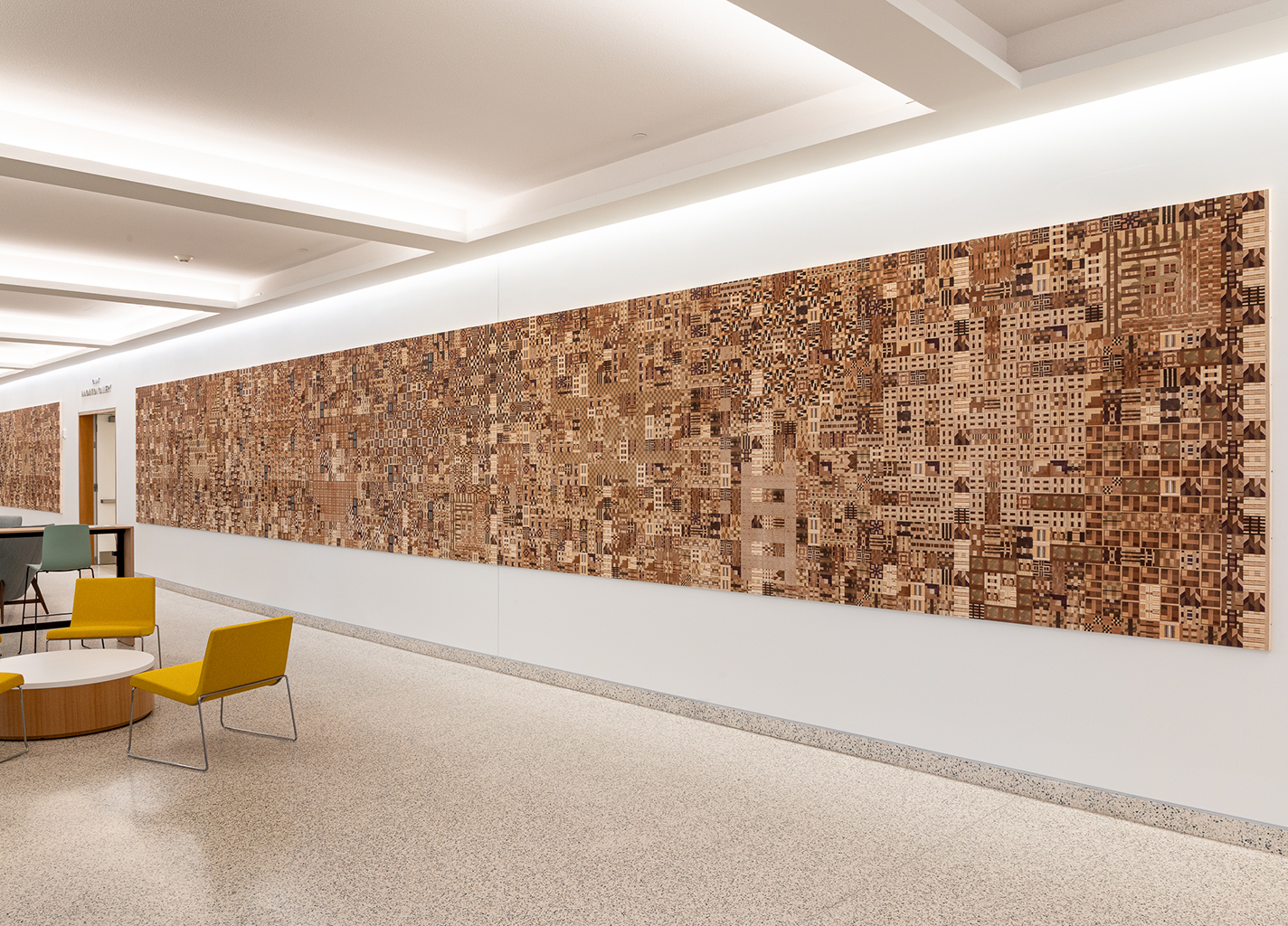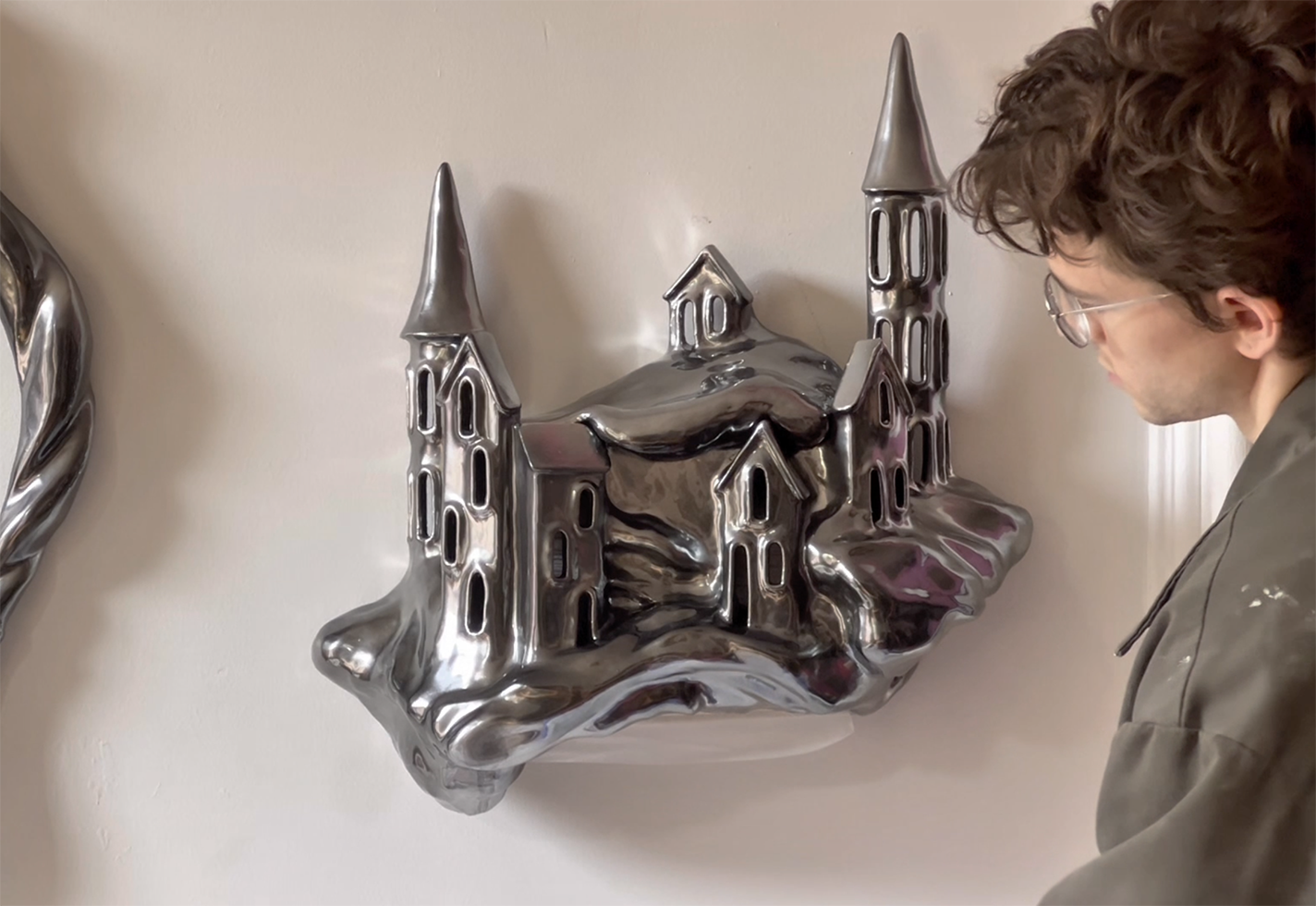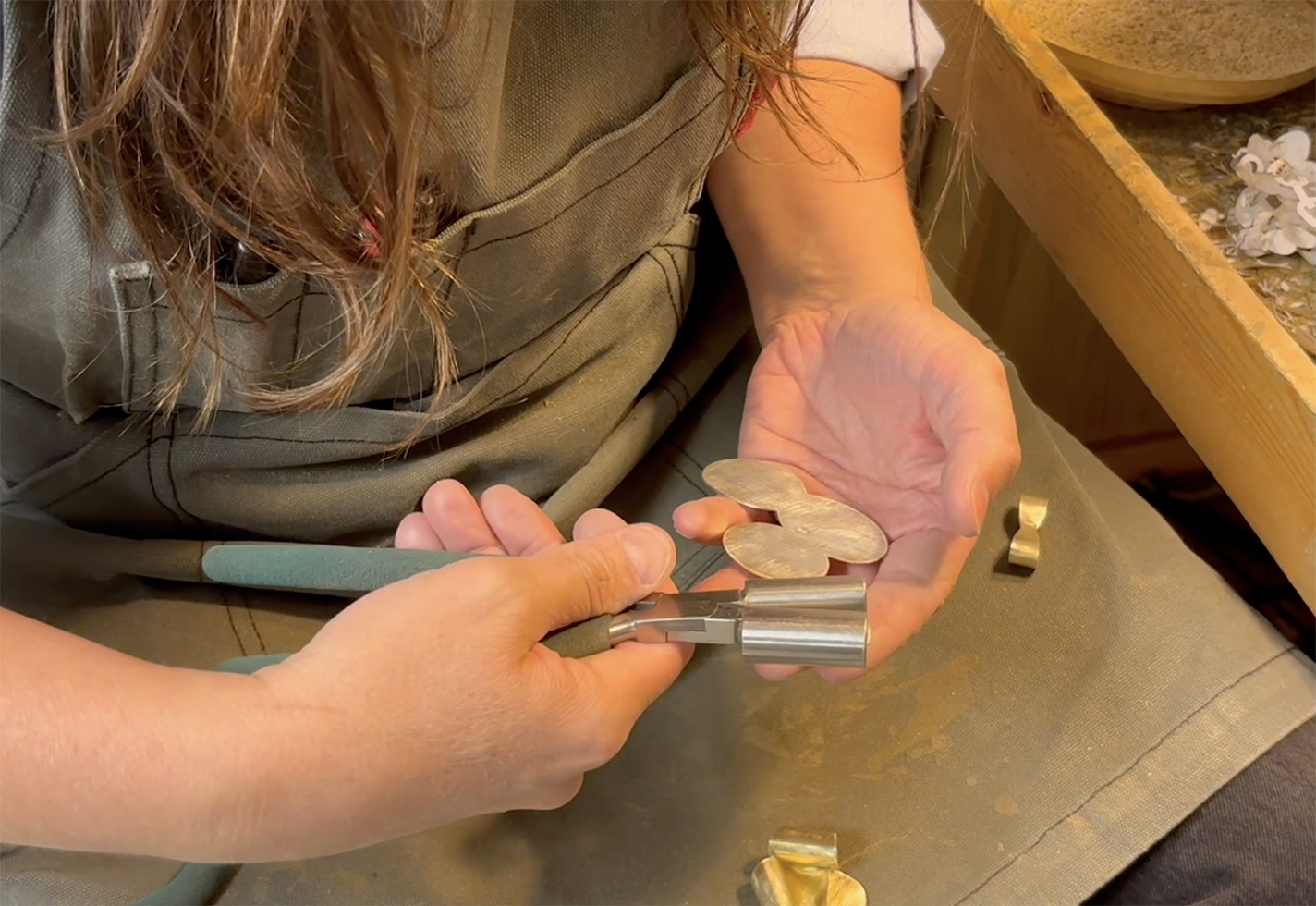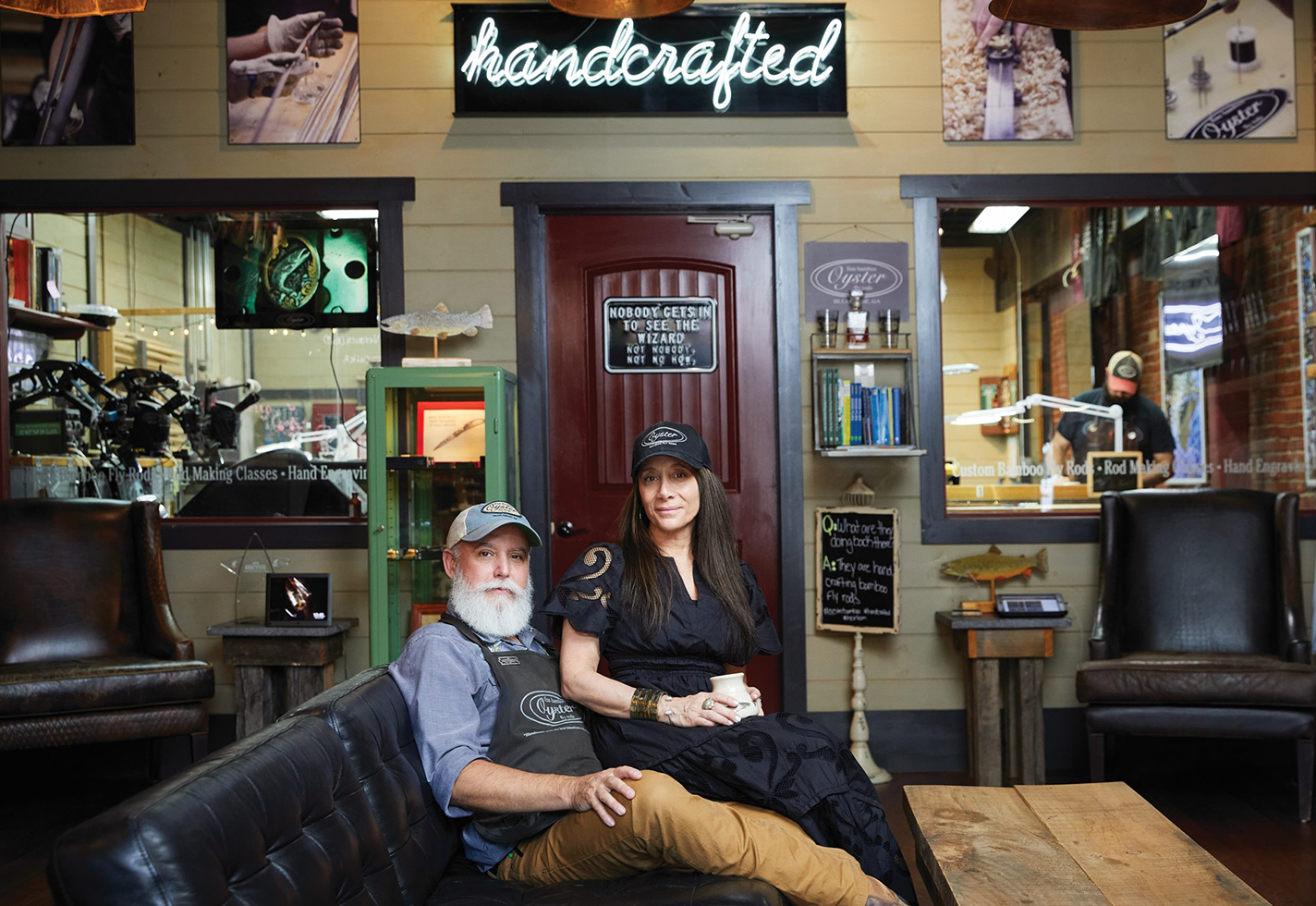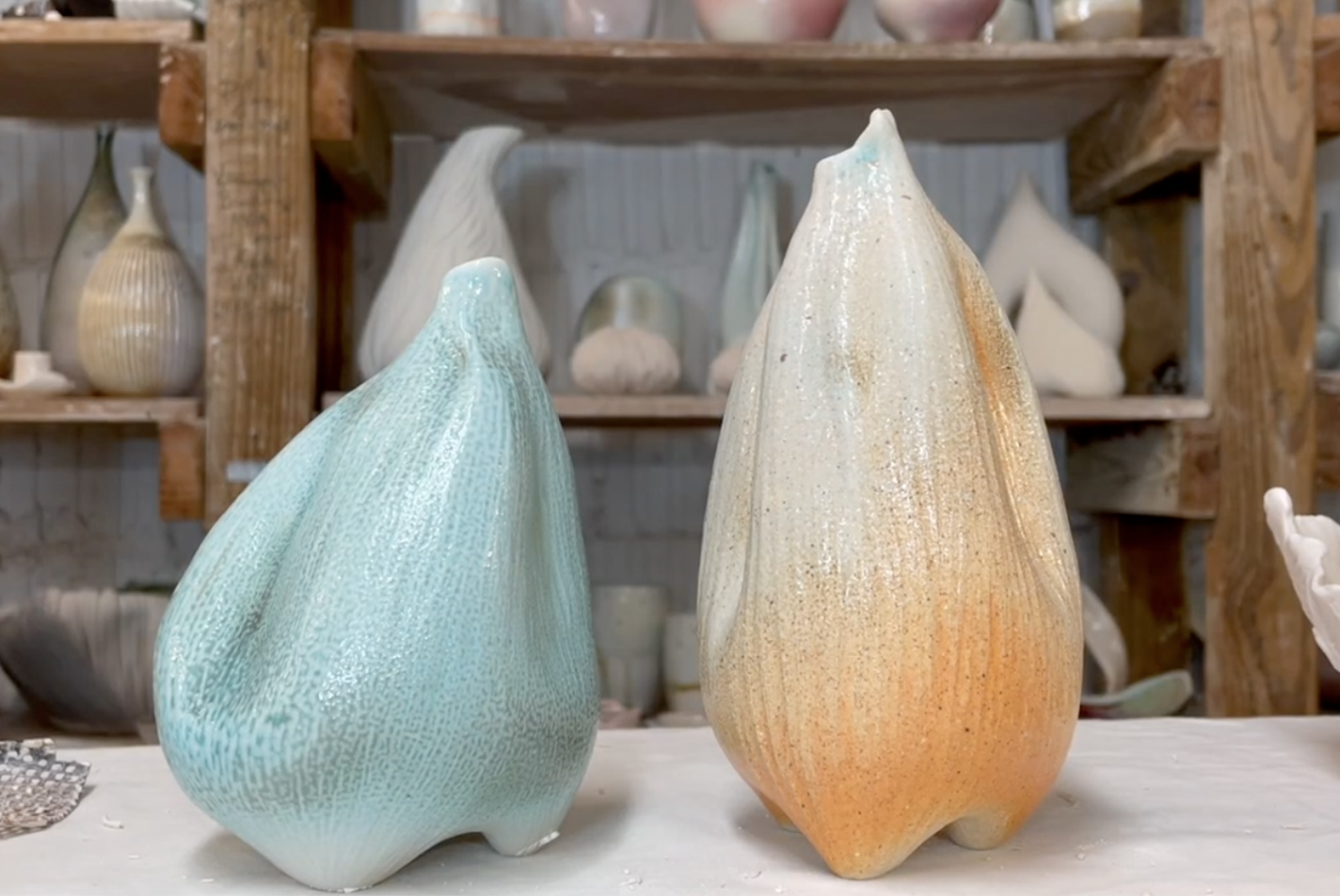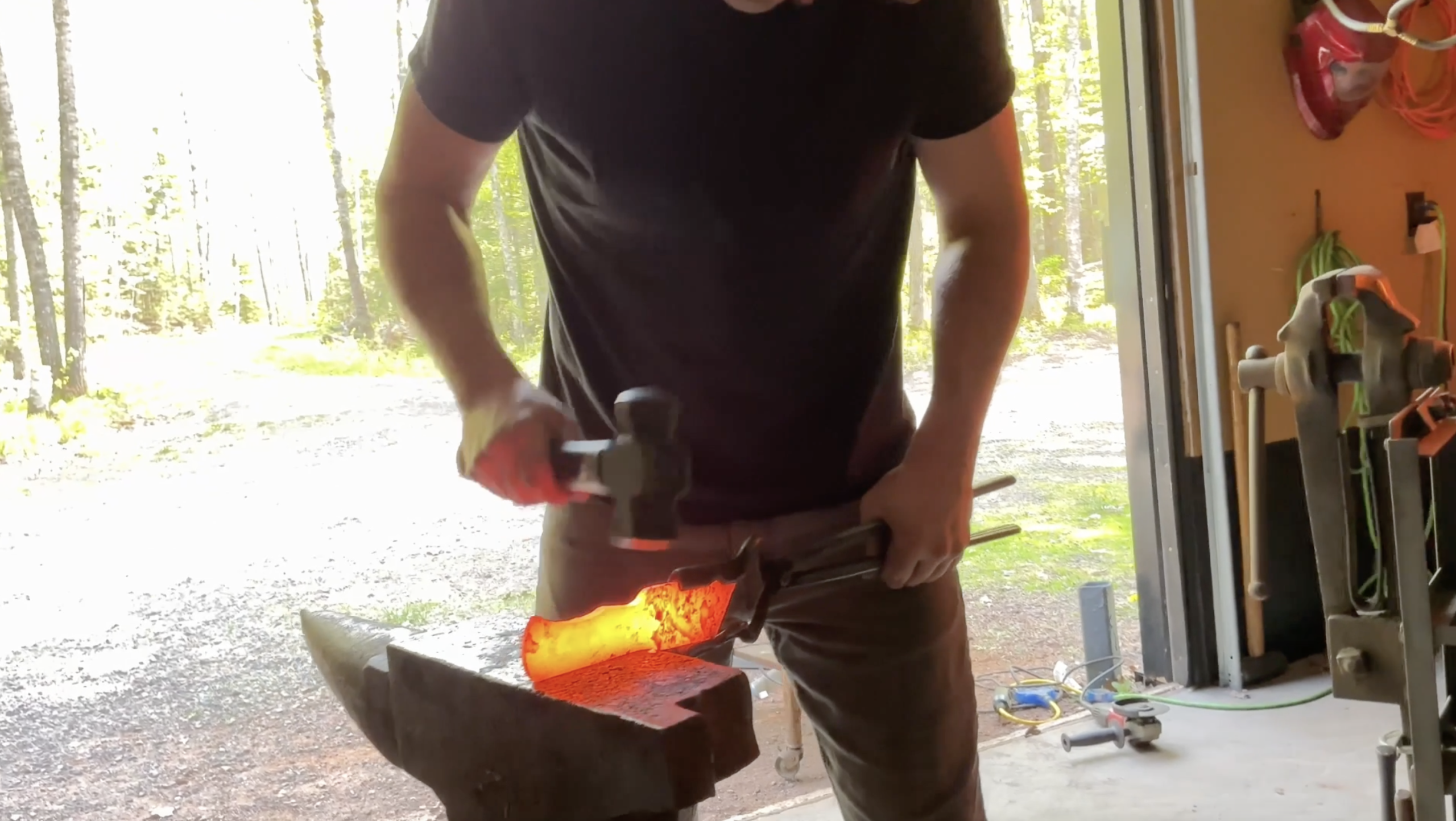There is a stunning complexity to Ato Ribeiro’s work.
The Atlanta-based artist combines patterns and materials into kaleidoscopic wooden tapestries, which are often large enough to cover entire walls. Ribeiro, who spent his formative years in Ghana, moved to Atlanta to attend Morehouse College, the storied historically Black liberal arts college that anchors a Black cultural hub in the city’s West End neighborhood. While attending grad school at Cranbrook Academy of Art in Michigan, Ribeiro picked up the material fascination that guides his work to this day, plucking different wood species out of the communal scrap bins. He harnesses the visual variety of the repurposed wood into spectacular works that, he says, “provide opportunities to seek out new points of reference, while preserving layers of African cultural heritage and varying ethnic perspectives.” He spoke to us about the craft scene in Atlanta in “The Scene: Craft in Atlanta” in the Summer 2025 issue of American Craft.
How do you describe your work or practice in 50 words or less?
My practice consists of collecting, joining, and refining natural and repurposed materials. My wooden kente quilt works, mixed-media installations, and prints provide opportunities to seek out new points of reference while preserving layers of African cultural heritage and varying ethnic perspectives.
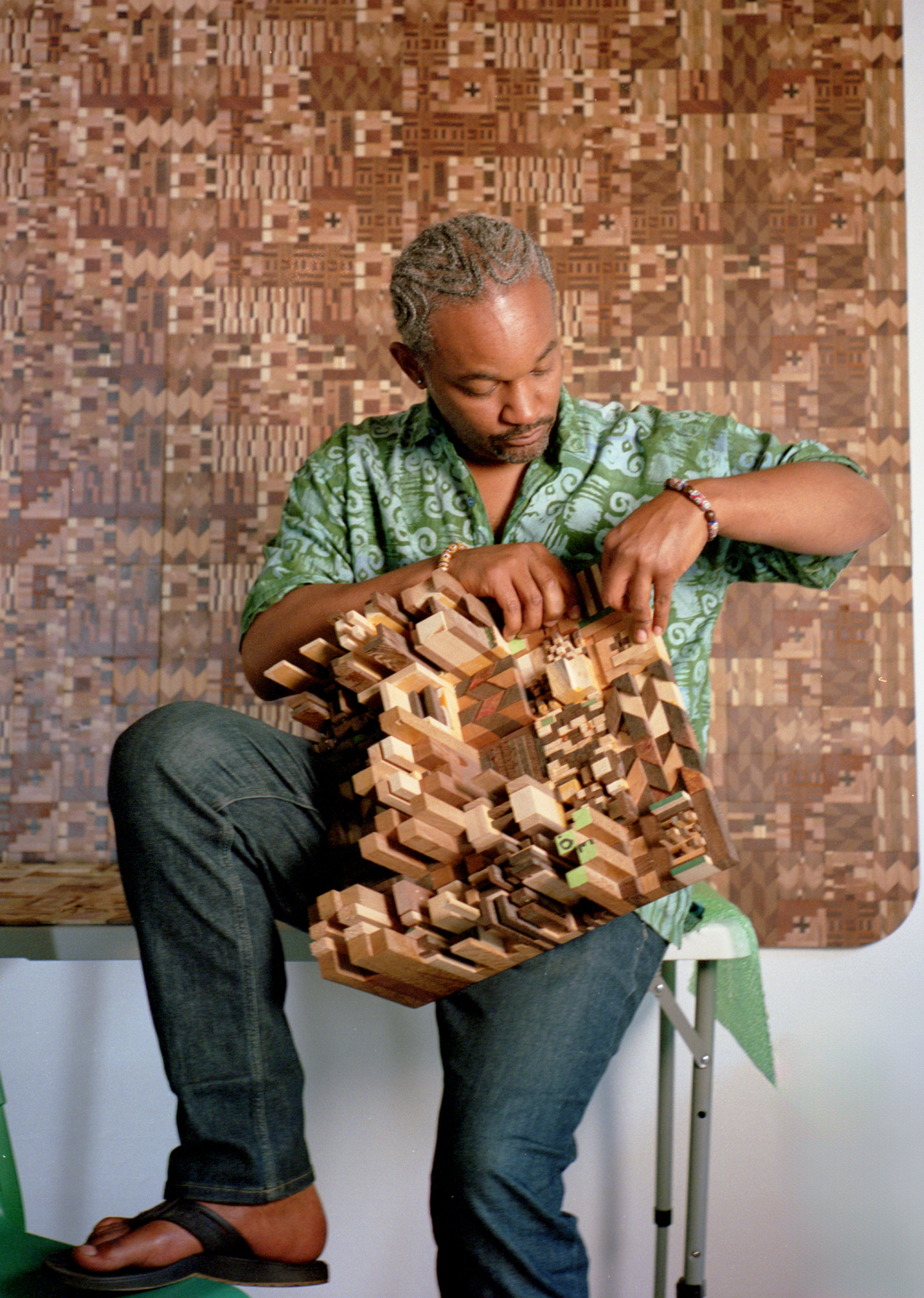
Ato Ribeiro works on a 3D piece.
